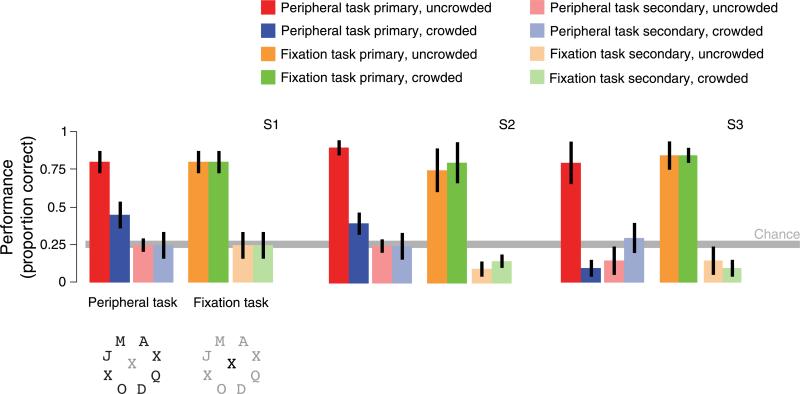Figure 8.
Diverted attention psychophysics. Three subjects performed a dual-task experiment outside the scanner. Subjects counted the number of frames containing Xs among the peripheral letters (Peripheral task) and the number of Xs appearing at fixation (Fixation task). For each block of trials, one of the two tasks was designated the primary task. The peripheral letters were either crowded (simultaneous presentation) or uncrowded (sequential presentation). Subjects were instructed to first respond to the primary task, and then respond to the secondary task. Chance performance was 0.25. For the peripheral task, conditions were uncrowded and primary (dark red), crowded and primary (dark blue), uncrowded and secondary (light red), and crowded and secondary (light blue). Similarly, for the fixation task, conditions were uncrowded and primary (dark yellow), crowded and primary (dark green), uncrowded and primary (light yellow), and crowded and primary (light green). For the fixation task, subjects performed well when it was primary and poorly when it was secondary, but there was no effect of crowding in either case. For the peripheral task, when primary, subjects performed well for uncrowded letters and performance was significantly lower for crowded letters (p = 0.036, two-sided paired t-test, n = 3). However, when the peripheral task was secondary (and subjects’ attention was instead diverted to the fixation task), peripheral performance was indistinguishable from chance for both crowded and uncrowded letters (p > 0.1, two-sided one-sample t-test comparing performance to chance, 0.25, n = 3), confirming that the fixation task effectively diverted attention from the peripheral stimuli.

